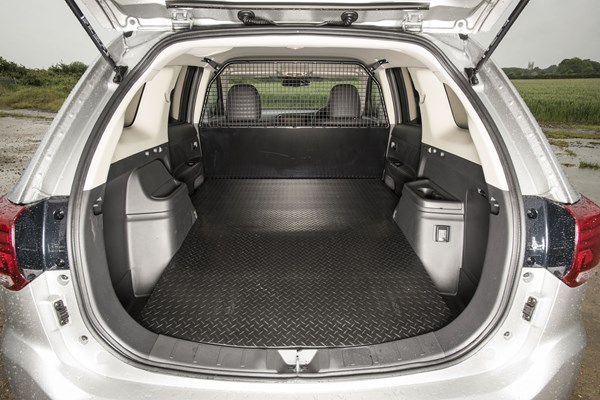Mitsubishi Outlander Commercial dimensions (2013-on)
On this page you’ll find the full dimensions, payload and towing capacity details of the Mitsubishi Outlander commercial 4x4 – a van based on a mid-size passenger SUV.
For information on what it's like to drive, standard equipment and value, see our main Mitsubishi Outlander Commercial review page.
As a passenger car-derived commercial 4x4, the Mitsubishi Outlander Commercial can’t match the outright practicality of purpose-built van or pickup – but it still has a properly useably load space, plus the advantage of not looking (or driving) like a conventional light commercial vehicle.
There is only the one body size and type, but the diesel and PHEV plug-in hybrid electric vehicle drivetrain options do have different levels of capability.
Regardless of drivetrain, both versions are the same size on the outside, and have the same load area capacity, as the batteries that provide the 30 miles or so of electric driving capability are located under the floor of the PHEV, and don’t reduce the load space.
How big is the Mitsubishi Outlander Commercial?
The commercial version’s exterior dimensions are the same as the passenger car’s – meaning that while it’s not a small car, it’s not particularly large for a van or pickup.
Mitsubishi Outlander exterior dimensions:
- Exterior length: 4,695mm
- Exterior height: 1,710mm
- Exterior width without door mirrors: 1,800mm
- Exterior width with door mirrors: 2,120mm
What’s the load area like in the Outlander Commercial?
To make a load space, Mitsubishi removes the rear seats and fits a load platform in their place. This inevitably sits rather high, thanks to the off-roader stance of the Outlander and the height of the boot lip.
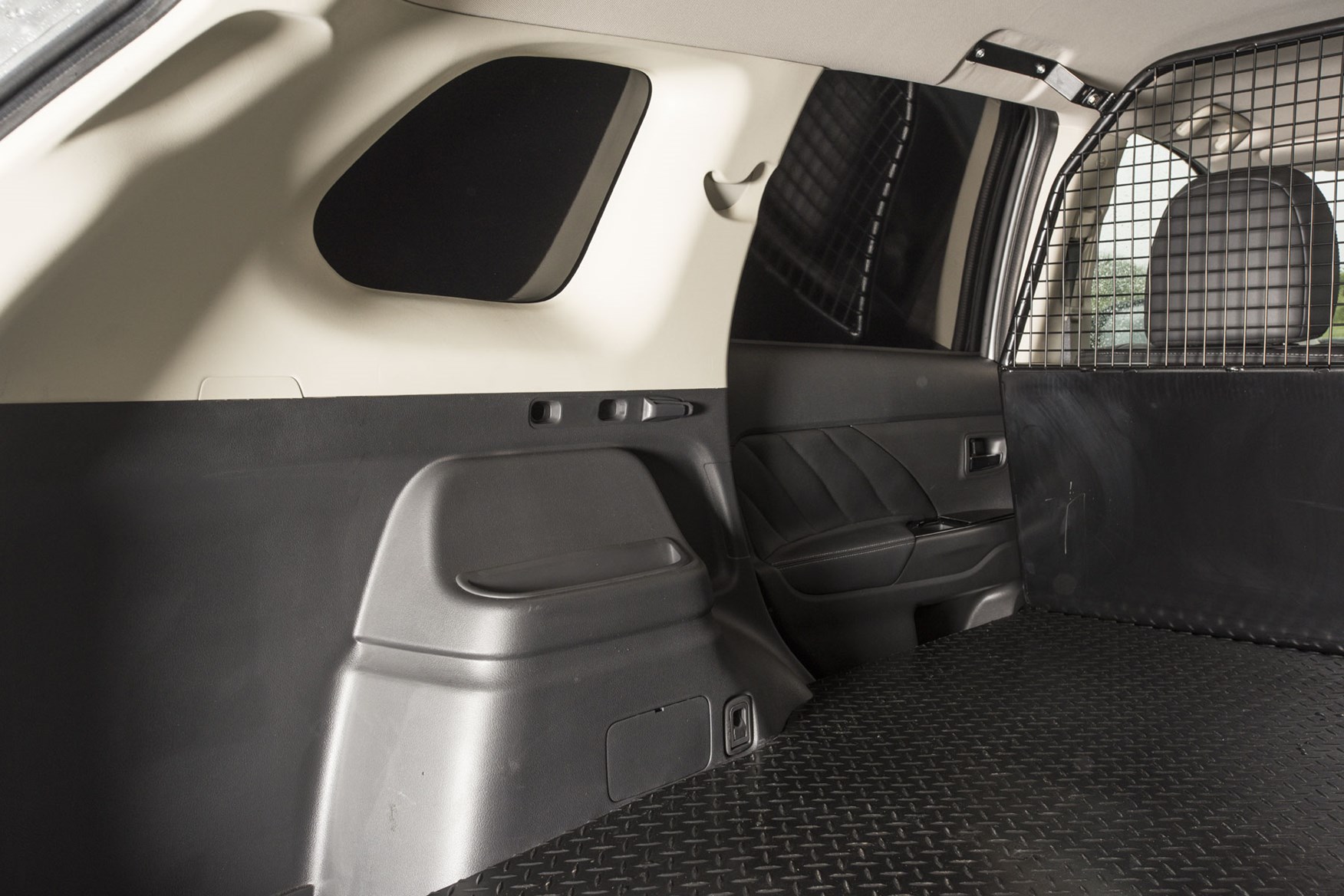
Access to the load area is via the main tailgate and the two rear side doors, which retain the same trimming as the passenger car, which is a bit jarring at first. Similarly, there are some plastic trim pieces in the load space that you wouldn’t usually find in a van, but at least these can be put to good use storing things.
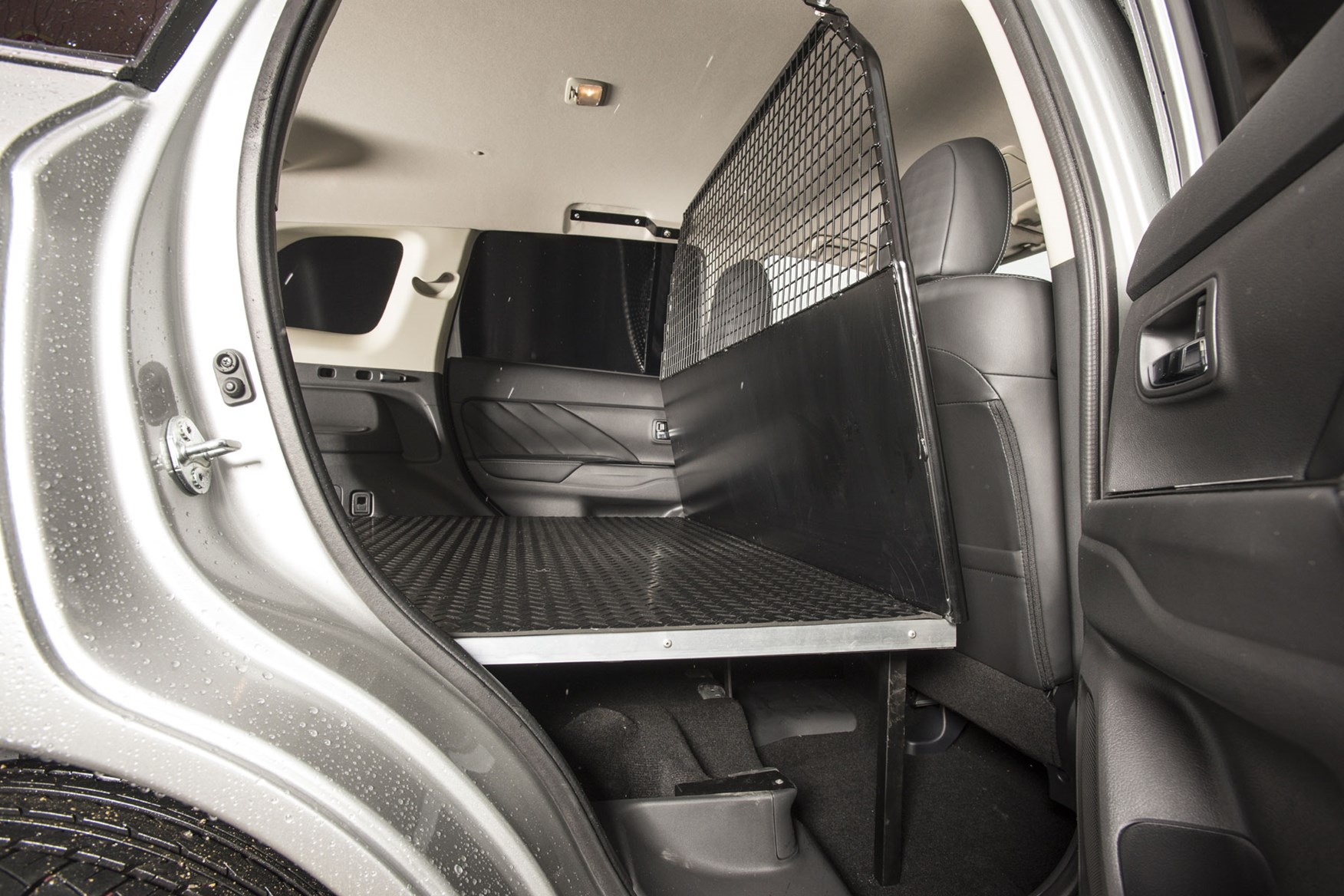
The side door openings aren’t particularly big, but they do give you access to a small amount of space under the load platform, suitable perhaps for tool boxes or similar, and usefully out of sight of prying eyes.
There’s more hidden storage beneath a flapped section of the load platform just inside the tailgate; the charging cables for the PHEV version are typically kept in here.
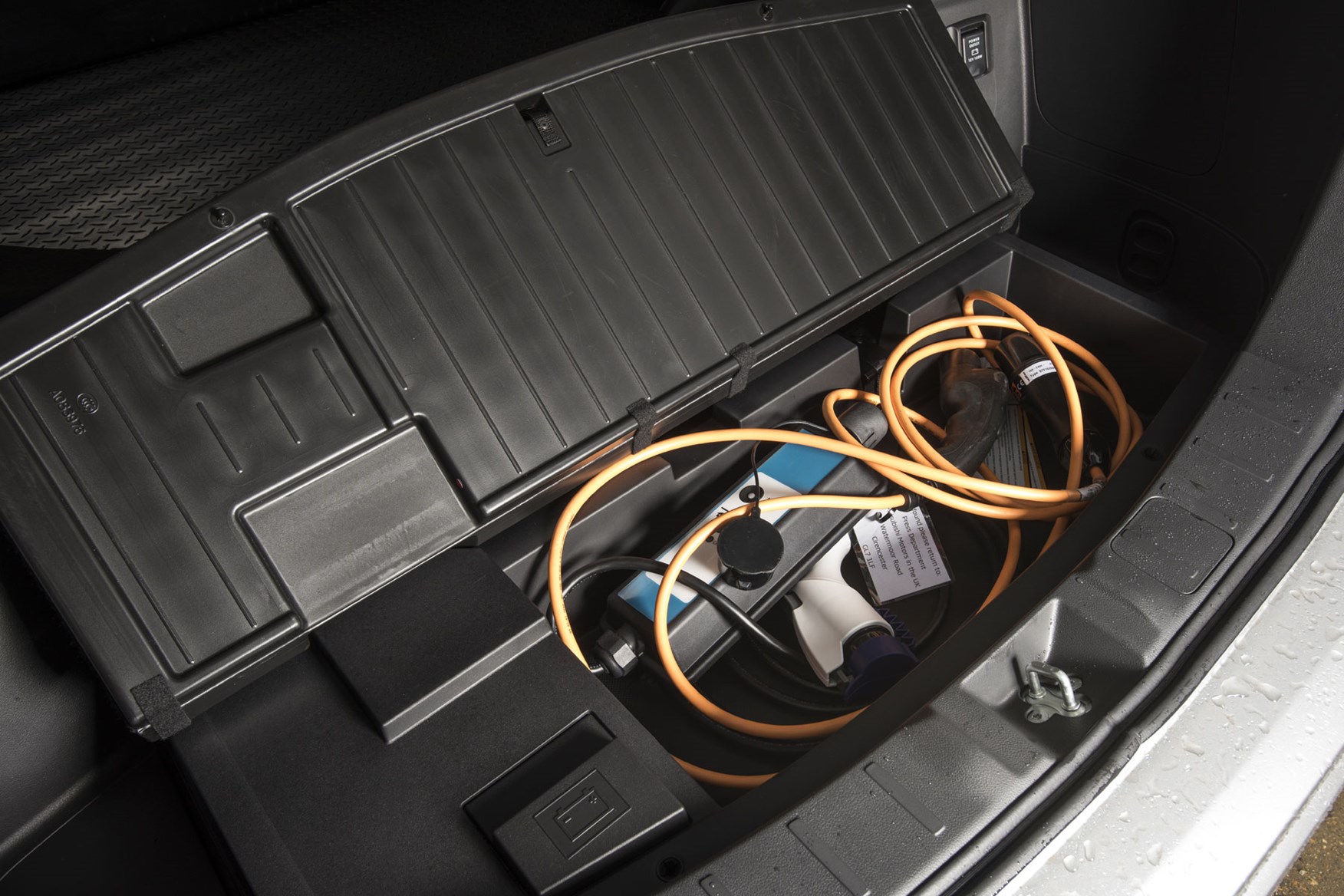
The load floor on the latest models is finished in grippy rubber (which thankfully now smells far less strongly than it used to), and there’s a metal bulkhead behind the remaining pair of front seats for occupant safety. This was originally an optional extra, but is now sensibly included as part of the standard equipment.
The top part of the bulkhead is metal mesh, meaning you can still see out of the rear window, which remains untinted glass. The rear side windows, however, are blank panels.
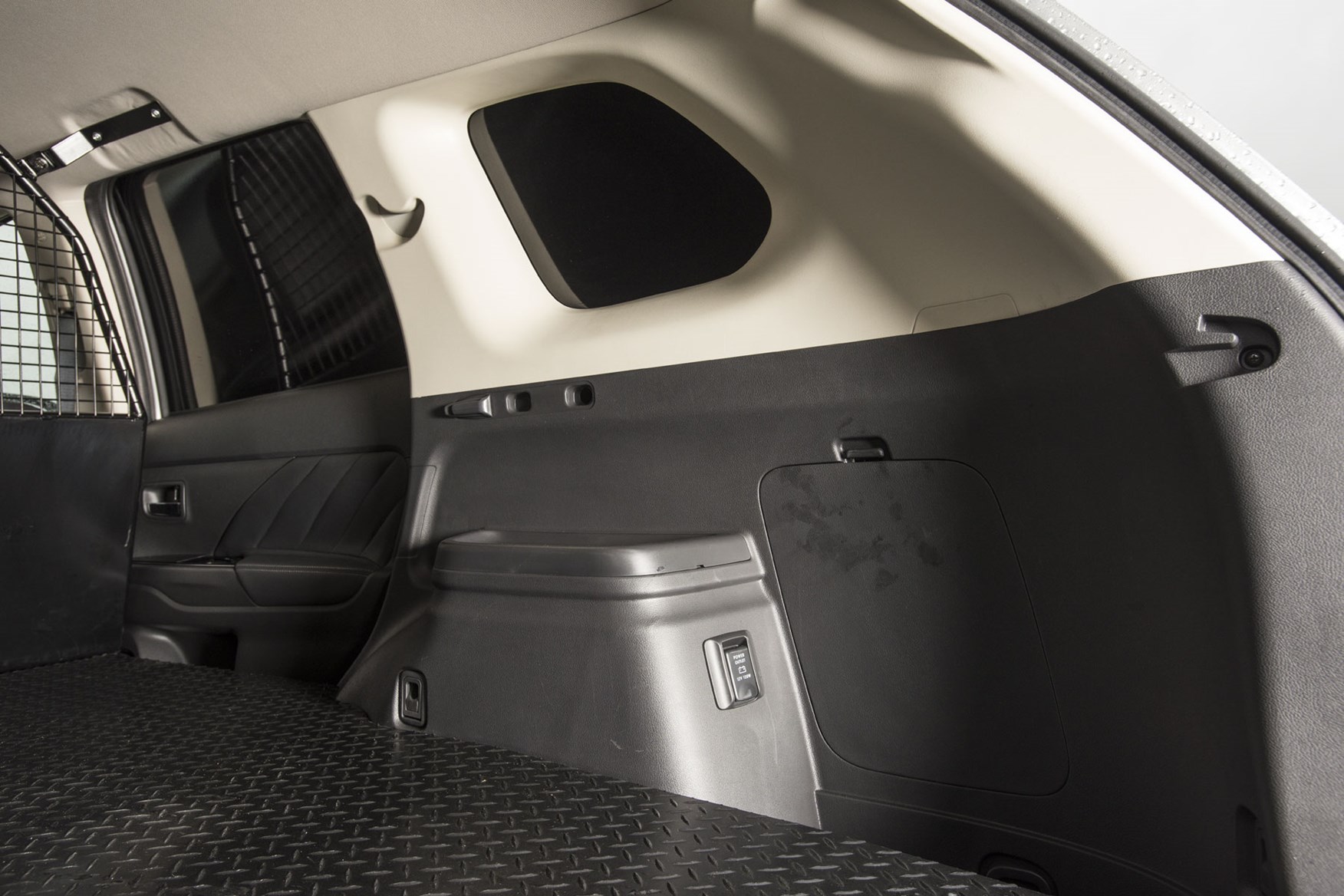
On newer models these are glossy black, and look like tinted glass, helping to disguise the commercial vehicle nature of this Outlander. On earlier models they were painted the same colour as the bodywork, giving the Mitsubishi a much more van-like appearance.
What size is the load area in the Outlander Commercial 4x4?
By van standards, not especially big, though the loading length exceeds that of some double cab pickups, and of course there’s a permanent roof, which adds some security in comparison to one of those.
The conversion from a passenger vehicle leaves an unusually shaped space, which Mitsubishi quotes at 1,609 litres. That's just over 1.6 cubic metres.
The full load area dimensions are listed below.
Mitsubishi Outlander Commercial load area dimensions:
- Maximum load length: 1,650mm
- Maximum load height: 800mm
- Width between the wheel arches: 1,000mm
- Load volume: 1,609 litres / 1.609 cubic metres
The Outlander is better suited to light duty work rather than heavy hauling, but if you are concerned about maximising the potential payload, the diesel is the better option – although as of July 2018 it’s been discontinued, so you’ll have to find one used if that is your priority.
The maximum payload rating for the diesel is 710kg, while the Outlander PHEV is limited to between 495kg and 510kg, depending on the year of manufacture – the 2019-onwards version is rated to 510kg, despite having a 2.4-litre petrol engine in place of the older 2.0-litre petrol engine.
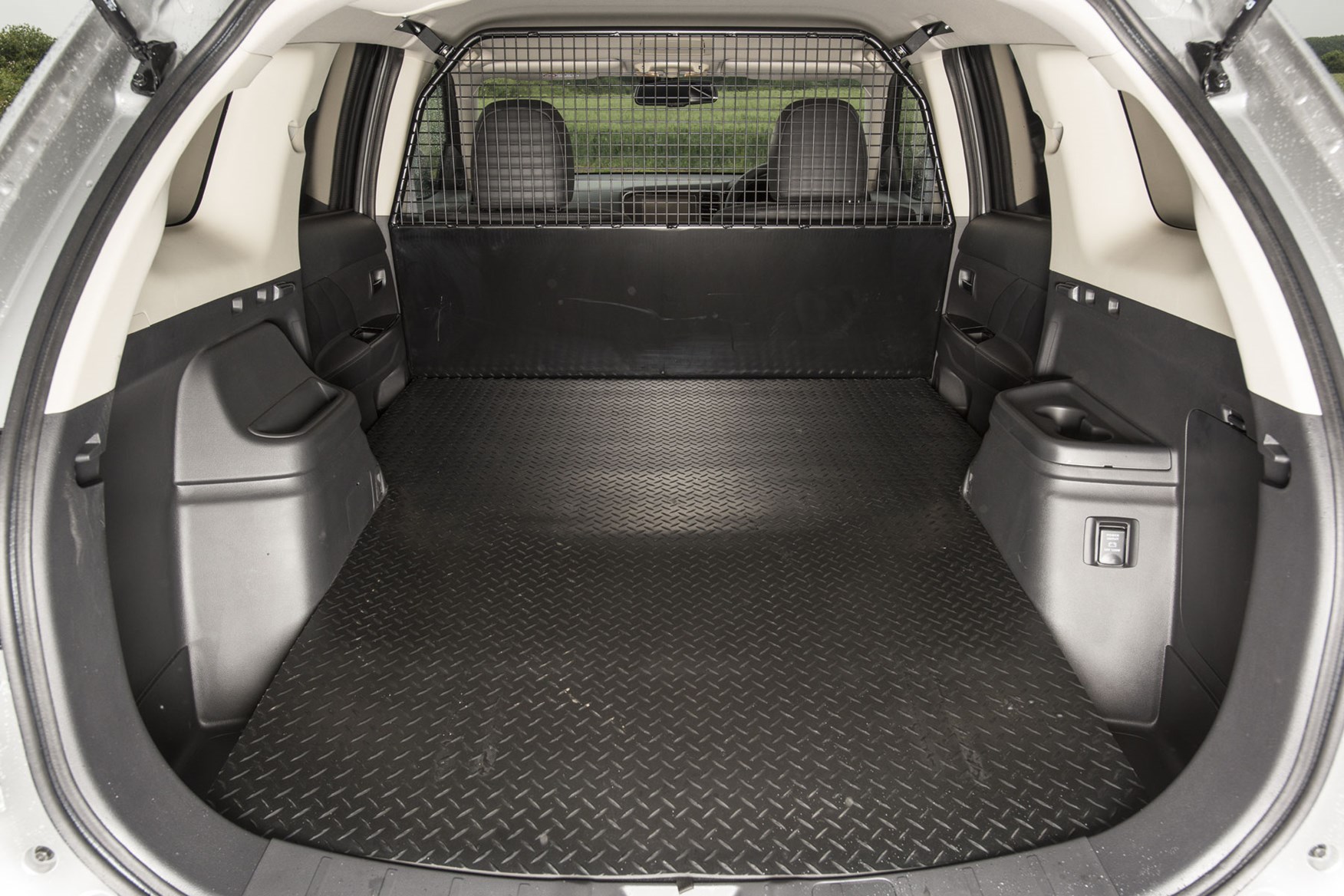
The reason for the difference between diesel and PHEV is largely due to the weight of the batteries the PHEV uses to achieve its electric-only driving capability.
Towing capacity is 2,000kg braked for the Outlander Commercial diesel and 1,500kg braked for the PHEV. Unbraked towing capacity is 750kg for both variants.
In case you’re concerned, note that the PHEV’s electric motors (it has two – one on each axle) deliver a vast amount of instant torque, so it should have no trouble getting whatever it’s loaded with or towing moving.
Both the diesel and the PHEV come equipped with automatic all-wheel drive, giving them modest off-road talent and plenty of grip on slippery surfaces; there’s even a dedicated Snow setting.


